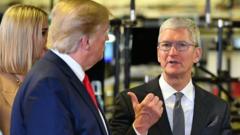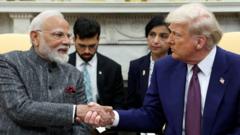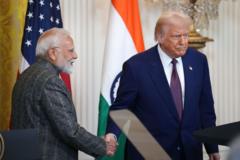The US has announced a 90-day extension of its trade truce with China, delaying potential tariff hikes, while both nations navigate complex economic negotiations.
US and China Trade Truce Extended: A 90-Day reprieve for Economic Stability

US and China Trade Truce Extended: A 90-Day reprieve for Economic Stability
The US and China aim to bolster trade relations amid ongoing negotiations and tariff threats.
In a significant move to ease ongoing trade tensions, the United States and China have agreed to extend their trade truce for an additional 90 days, just hours before potential new tariffs were set to take effect. On Monday, US President Donald Trump enacted an executive order to maintain the pause until November 10, with both countries confirming the extension.
As part of this truce, the US will continue imposing a 30% tariff on Chinese imports, while China maintains a 10% tariff on American goods. This extension is particularly crucial as Washington had previously threatened to increase tariffs on Chinese products up to a staggering 145%, leading China to respond with similar threats against US goods—amounting to 125% duties. The stakes of these trade negotiations are high, as a trade deficit of nearly $300 billion with China has been cited as a pressing issue by the White House.
Further discussions are also planned to address various topics, including unfair trade practices, boosting access for American exporters to the Chinese market, and resolving national security concerns. A spokesperson from the Chinese embassy in Washington emphasized the importance of cooperative trade, stating, “Win-win cooperation between China and the United States is the right path; suppression and containment will lead nowhere.”
However, the extension brings mixed sentiments from the business community. Owners like Beth Benike, founder of Busy Baby, have expressed frustration regarding the uncertainty that these temporary measures create. She highlighted the challenges of planning for future business costs when tariff rates remain in limbo.
Tensions soared earlier this year after Trump announced broad new tariffs on various goods, exacerbating trade disputes that had previously quieted. Since an agreement in May aimed at reducing tariffs, products have still faced heightened costs; Chinese goods imported into the US face an additional 30% tariff compared to earlier in the year.
Negotiations are set to continue, addressing not only tariffs but also access to China’s rare earth materials, US restrictions on advanced technology sales to China, and issues stemming from China’s purchases of Russian oil. Trump's recent lifting of some export restrictions on American semiconductor sales to China in exchange for revenue sharing has sparked further controversy, with critics labeling the arrangement a "shakedown."
Looking ahead, Trump has hinted at potential future agreements, urging increased purchases of American soybeans by China. Yet, despite the truce, trade flows have already been impacted, with US imports from China in June plummeting nearly 50% compared to the same month in 2024, suggesting a growing rift in the economic relationship between the two powerhouses.
As part of this truce, the US will continue imposing a 30% tariff on Chinese imports, while China maintains a 10% tariff on American goods. This extension is particularly crucial as Washington had previously threatened to increase tariffs on Chinese products up to a staggering 145%, leading China to respond with similar threats against US goods—amounting to 125% duties. The stakes of these trade negotiations are high, as a trade deficit of nearly $300 billion with China has been cited as a pressing issue by the White House.
Further discussions are also planned to address various topics, including unfair trade practices, boosting access for American exporters to the Chinese market, and resolving national security concerns. A spokesperson from the Chinese embassy in Washington emphasized the importance of cooperative trade, stating, “Win-win cooperation between China and the United States is the right path; suppression and containment will lead nowhere.”
However, the extension brings mixed sentiments from the business community. Owners like Beth Benike, founder of Busy Baby, have expressed frustration regarding the uncertainty that these temporary measures create. She highlighted the challenges of planning for future business costs when tariff rates remain in limbo.
Tensions soared earlier this year after Trump announced broad new tariffs on various goods, exacerbating trade disputes that had previously quieted. Since an agreement in May aimed at reducing tariffs, products have still faced heightened costs; Chinese goods imported into the US face an additional 30% tariff compared to earlier in the year.
Negotiations are set to continue, addressing not only tariffs but also access to China’s rare earth materials, US restrictions on advanced technology sales to China, and issues stemming from China’s purchases of Russian oil. Trump's recent lifting of some export restrictions on American semiconductor sales to China in exchange for revenue sharing has sparked further controversy, with critics labeling the arrangement a "shakedown."
Looking ahead, Trump has hinted at potential future agreements, urging increased purchases of American soybeans by China. Yet, despite the truce, trade flows have already been impacted, with US imports from China in June plummeting nearly 50% compared to the same month in 2024, suggesting a growing rift in the economic relationship between the two powerhouses.



















